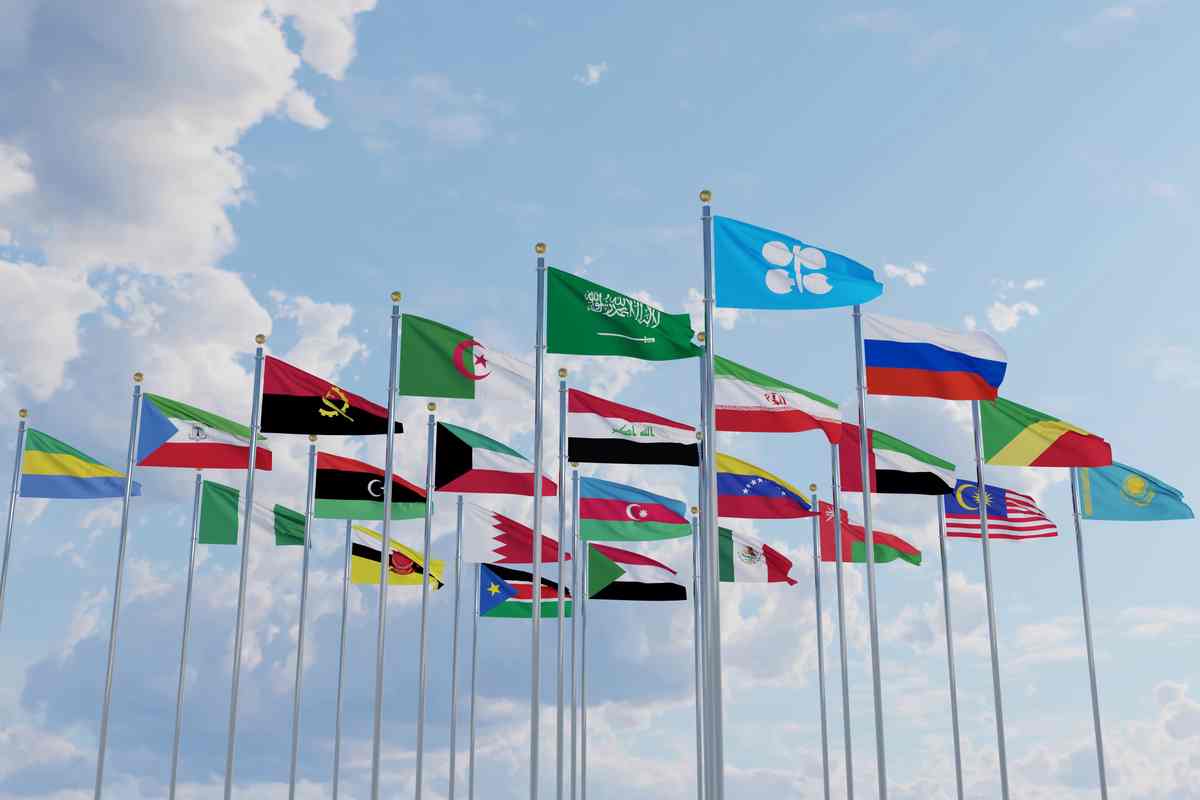Brent falters as delayed OPEC+ meeting dampens sentiment
The front-month ICE Brent contract has dropped $0.98/bbl lower on the day, to $81.38/bbl at 09.00 GMT.
 PHOTO: Flags of OPEC+ countries. Getty Images
PHOTO: Flags of OPEC+ countries. Getty Images
Upward pressure:
“Will oil prices continue to rise? In short, most probably,” Christyan Malek, global head of energy strategy at JP Morgan said in a research note from 2 November. Against a backdrop of global oil demand growth, Malek has attributed “diminishing” spare capacity and low commercial US crude inventories among the factors that could lead to a 1.1 million-bbl supply deficit in 2025. This could propel Brent to $150/bbl in the short to medium term, he added.
JP Morgan’s report stresses a bullish medium-term outlook, while other investment banks are bullish about the near term.
UBS has bet on a $90-100/bbl range for Brent “over the coming months” over possible weakness in the US dollar. Goldman Sachs has forecast Brent to reach $92/bbl in six months and to average $93/bbl within a year due to supply constraints and robust demand.
Downward pressure
OPEC+'s meeting was rescheduled to 30 November from 25-26 November. This was allegedly due to an impasse between the coalition’s de facto leader Saudi Arabia and other producers over production levels and targets. Most market observers believe OPEC+'s differences over 2024 output policy will have a ripple effect on Brent's price in the near future. Without a clear path forward, Brent is likely to remain volatile in the short term.
“Saudi will want other countries to cut as well. It’s going to be a negotiation, where Saudi will probably use that lollipop cut as a potential stick if the other countries don’t cut more,” energy-focused hedge fund trader Pierre Andurand told Bloomberg.
Concerns over potential oversupply in the global oil market have also inhibited price increases.
After Iran committed to raise its oil production to reach 3.6 million b/d by March next year, Reuters has now reported that Venezuela is also looking to add some supply to the global market. It is currently producing some 850,000 b/d of crude oil, Reuters reported citing Venezuelan deputy oil minister, Erick Perez, and expects to reach its 1 million b/d capacity soon.
In addition, commercial US crude inventories increased for the third consecutive week by adding 8.70 million bbls in the week that ended 17 November, according to the US Energy Information Administration (EIA). This followed a 17 million-bbl build in the previous two weeks.
By Konica Bhatt
Please get in touch with comments or additional info to news@engine.online





